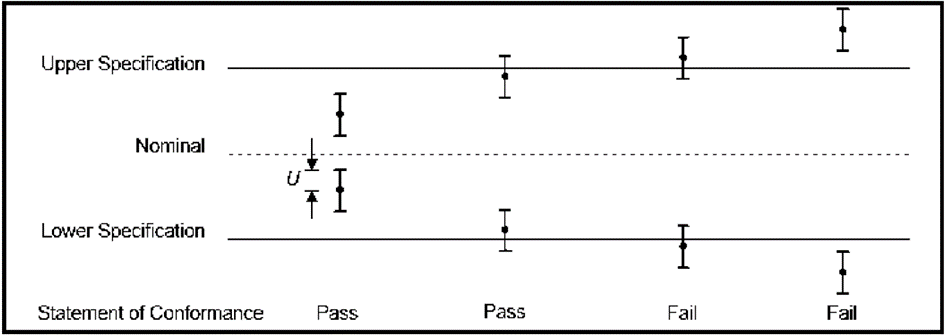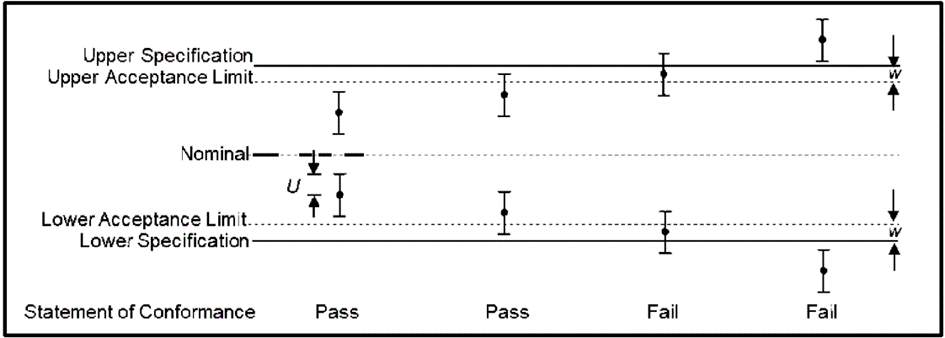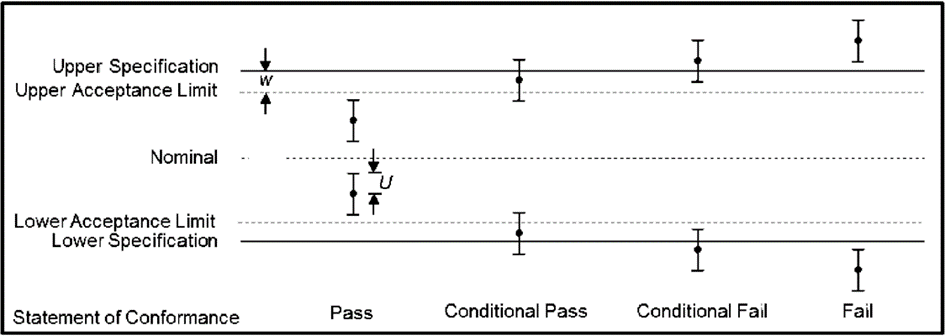Decision Rule: A rule describing how measurement uncertainty is to be taken into account when determining compliance with a specified requirement.
Acceptance Limit (AL):A specified upper or lower limit of acceptable measured quantity values.
Guard Band (w): The interval between a tolerance limit and an equivalent acceptance limit where the length w = |TL -AL|
Guard Bands: The use of a guard band can reduce the likelihood of making an incorrect conformity decision. Basically, it is a safety factor introduced into the measurement decision process by lowering the acceptance limit below the specification/tolerance limit.
Simple Acceptance: A decision rule where the acceptance value is the same as the tolerance limit, i.e. AL = TL
Binary statement for simple acceptance rule (w = 0)
Statements of conformity are reported as follows:
- Pass : the measured value is below the acceptance limit, AL = TL.
- Fail : the measured value is above the acceptance limit, AL = TL.

Binary statement with guard band
Statements of conformity are reported as follows:
- Pass : acceptance based on guard band; the measurement result is below the acceptance limit, AL = TL - w
- Fail : rejection based on guard band; if the measurement result is above the acceptance limit, AL = TL – w

Non-binary statement with guard band
Statements of conformity are reported as follows:
- Pass : the measured result is below the acceptance limit, AL = TL - w.
- Conditional Pass : the measured result is within the guard band and below the tolerance limit in the range [TL - w,TL].
- Conditional Fail : the measured result is above the tolerance limit in the range [TL, TL+w] but below the tolerance limit added to the guard band.
-Fail : the measured result is above the tolerance limit added to the guard band, TL + w.

